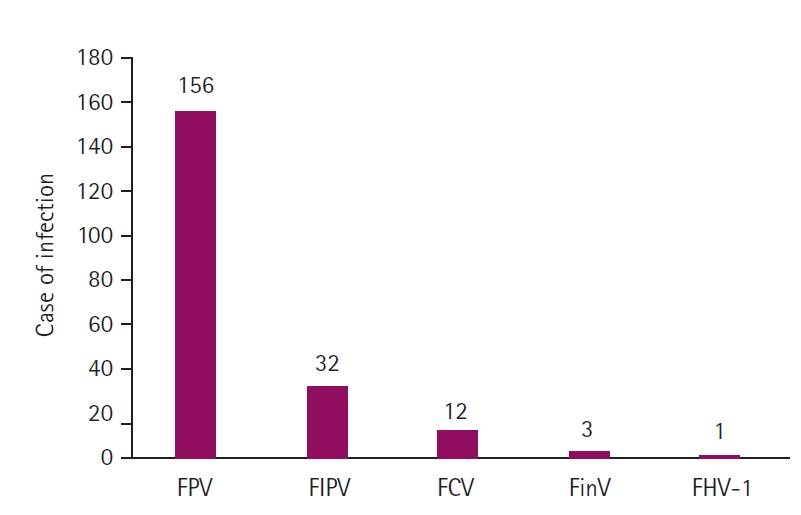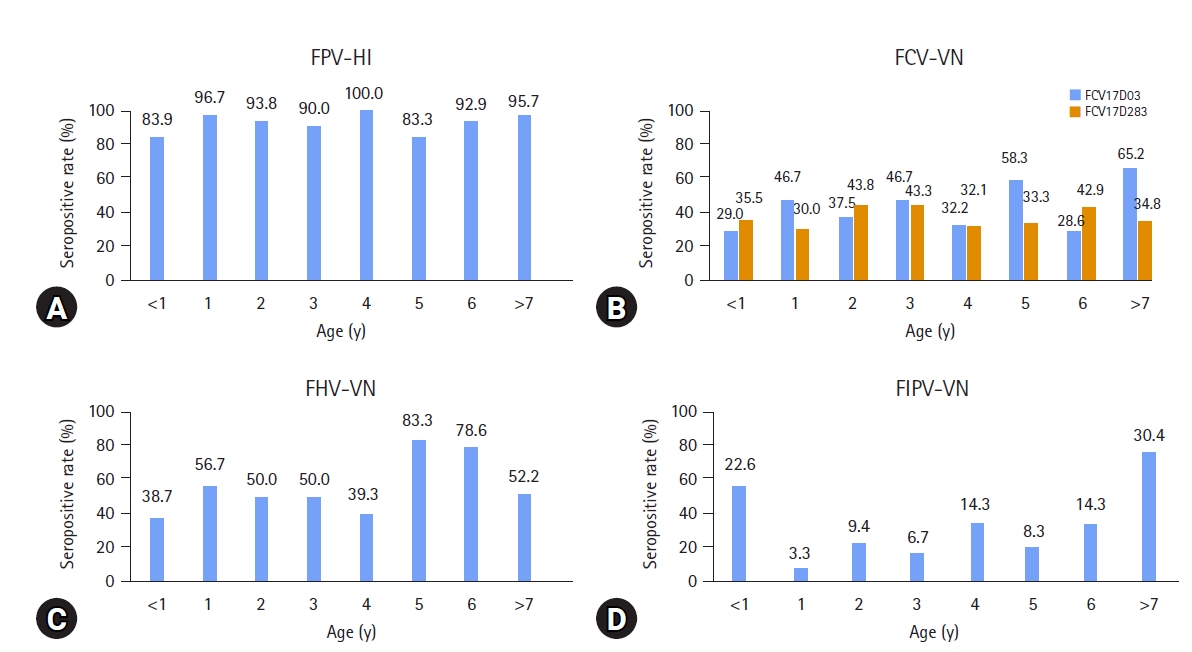1. Stuetzer B, Hartmann K. Feline parvovirus infection and associated diseases. Vet J 2014;201:150-155.


2. Radford AD, Coyne KP, Dawson S, Porter CJ, Gaskell RM. Feline calicivirus. Vet Res 2007;38:319-335.


3. Gaskell R, Dawson S, Radford A, Thiry E. Feline herpesvirus. Vet Res 2007;38:337-354.


8. Horiuchi M, Yamaguchi Y, Gojobori T, Mochizuki M, Nagasawa H, Toyoda Y, Ishiguro N, Shinagawa M. Differences in the evolutionary pattern of feline panleukopenia virus and canine parvovirus. Virology 1998;249:440-452.


11. Gould D. Feline herpesvirus-1: ocular manifestations, diagnosis and treatment options. J Feline Med Surg 2011;13:333-346.


12. Lee Y, Maes R, Tai SS, Soboll Hussey G. Viral replication and innate immunity of feline herpesvirus-1 virulence-associated genes in feline respiratory epithelial cells. Virus Res 2019;264:56-67.


14. Spatz SJ, Maes RK. Immunological characterization of the feline herpesvirus-1 glycoprotein B and analysis of its deduced amino acid sequence. Virology 1993;197:125-136.


16. Lappin MR, Andrews J, Simpson D, Jensen WA. Use of serologic tests to predict resistance to feline herpesvirus 1, feline calicivirus, and feline parvovirus infection in cats. J Am Vet Med Assoc 2002;220:38-42.


17. Yang DK, Park YR, Park Y, An S, Choi SS, Park J, Hyun BH. Isolation and molecular characterization of feline panleukopenia viruses from Korean cats. Korean J Vet Res 2022;62:e10.


18. Yang DK, Park YR, Yoo JY, Choi SS, Park Y, An S, Park J, Kim HJ, Kim J, Kim HH, Hyun BH. Biological and molecular characterization of feline caliciviruses isolated from cats in South Korea. Korean J Vet Res 2020;60:195-202.


19. Yang DK, Kim HH, Park YR, Yoo JY, Choi SS, Park Y, An S, Park J, Kim J, Kim HJ, Lee J, Hyun BH. Isolation and molecular characterization of feline herpesvirus 1 from naturally infected Korean cats. J Bacteriol Virol 2020;50:263-272.

21. Yang DK, Yoon SS, Byun JW, Lee KW, Oh YI, Song JY. Serological survey for canine parvovirus type 2a (CPV-2a) in the stray dogs in South Korea. J Bacteriol Virol 2010;40:77-81.

22. Harder TC, Vahlenkamp TW. Influenza virus infections in dogs and cats. Vet Immunol Immunopathol 2010;134:54-60.


23. Dall’Ara P, Labriola C, Sala E, Spada E, Magistrelli S, Lauzi S. Prevalence of serum antibody titres against feline panleukopenia, herpesvirus and calicivirus infections in stray cats of Milan, Italy. Prev Vet Med 2019;167:32-38.


25. Liu C, Liu Y, Qian P, Cao Y, Wang J, Sun C, Huang B, Cui N, Huo N, Wu H, Wang L, Xi X, Tian K. Molecular and serological investigation of cat viral infectious diseases in China from 2016 to 2019. Transbound Emerg Dis 2020;67:2329-2335.



26. Pollock RV, Carmichael LE. Dog response to inactivated canine parvovirus and feline panleukopenia virus vaccines. Cornell Vet 1982;72:16-35.


















 PDF Links
PDF Links PubReader
PubReader ePub Link
ePub Link Full text via DOI
Full text via DOI Download Citation
Download Citation Print
Print



